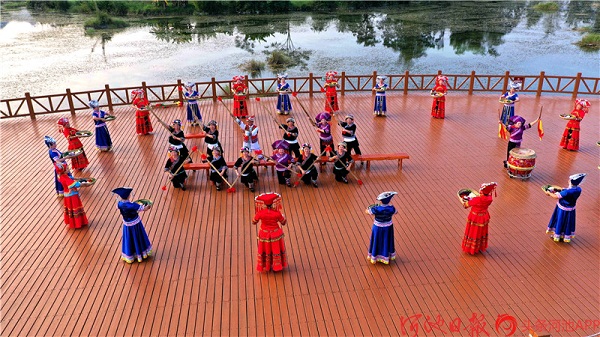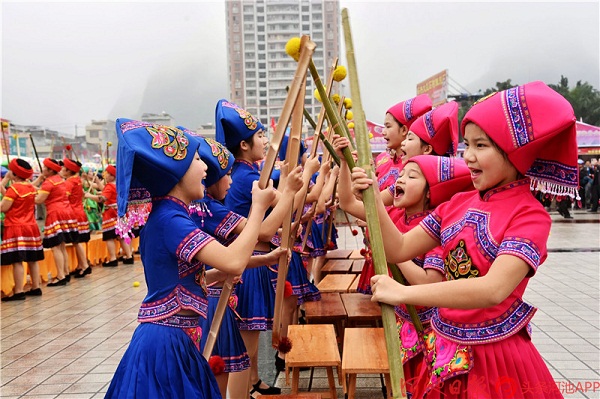Stick Dance: a national intangible cultural heritage in Du'an
By (chinadaily.com.cn)
2021-04-22

Du'an people perform the dance at Chengjiang National Wetland Park. [Photo/Hechi Daily]
The custom of the Zhuang ethnic people in which participants hit their shoulders with poles, also known as "stick dancing", is a kind of dance that simulates agricultural labor using poles and a bench. With its energetic rhythm and the magnificent effect of the performance, the custom of stick dancing reflects the happiness and joy of a good harvest.
The dance is widely performed during the Spring Festival and Sanyuesan Festival by the Zhuang ethnic people in Du'an, Mashan, Shanglin, Dahua, Donglan, Nandan and other counties in Guangxi Zhuang autonomous region.
Of these areas, Du'an Yao autonomous county is the core cultural area, with the longest history, the richest variations, as well as the best cultural protection and inheritance.
After being passed down for thousands of years, the dance has become an indispensable part of the Zhuang ethnic people's cultural life. There are currently more than 300 stick dance teams in 19 towns in Du'an, with more than 50,000 participants. Meanwhile, it has been taught in primary and secondary schools since 2018.
The custom has been recommended by the Ministry of Culture and Tourism for China's fifth batch of intangible cultural heritage. It will boost rural cultural festivals and enrich local people’s cultural lives, as well as serving other functions in rural cultural development.
 |
| Du'an children perform the dance to celebrate Sanyuesan Festival. [Photo/Hechi Daily] |
Rich in historical, cultural and social value, Zhuang's stick dance is an important conduit for studying the lives of the ancient Zhuang people and seeing the historical and cultural changes they have undergone. The dance is an important means by which local people can inherit ethnic culture, and will enhance the confidence and cohesion of national culture, according to Wei Tuliang, a member of the Chinese Dancers Association.




